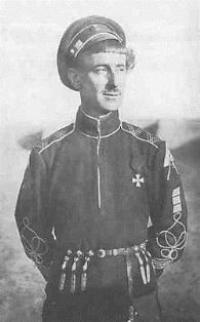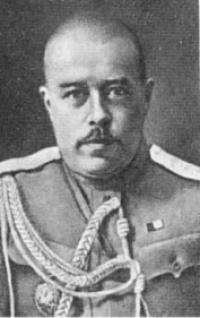You are here
White mutiny in Borovoy.


Borovoye Natural Park.
«Memory is the treasure house of the mind wherein the monuments thereof are kept and preserved»
Thomas Fuller.
National natural parks in Central Kazakhstan.
“Now we are experiencing the Bolshevik days. We see in the twilight the outlines of tsarism, William and his supporters, and clearly we are clearly facing the provocative figure of Vladimir Lenin and his supporters: Trotsky-Bronstein, Ryazanov-Goldenbach, Kamenev-Rosenfeld, Sukhanov-Himmer and Zinoviev-Apfelbaum.
Russia is dying. We are present at her last breath. There was Great Russia from the Baltic Sea to the ocean, from the White Sea to Persia, there was a whole, great, formidable, powerful, agricultural, working Russia - there is none”.
In Kokchetav region in February 1918, ataman B. Annenkov, then still Yesaul, was hiding from pursuit. He organized an action in Omsk to rescue the military shrines of Siberian kazakhs - the Military banner of the 300th anniversary of the Romanov dynasty and the Ermak banner (in other words, stole), then went to Kokchetav, hid in the village of Koturkolskaya at one time, and then went to the Steppe.
In February 1919, the troops of Kolchak, led by ataman Dutov, who dealt with the Bolsheviks and their sympathizers, entered the village of Schuchinskaya. In total, about 200 people were executed. In March of the same year, the partisans of Vedenovka and Borovoy liberated the Borovoye village from Kolchak and held it until the Red Army units approached, occupying the villages of Koturkolskaya and Schuchinskaya.
In the spring of 1920, food detachments arrived from Ivanovo-Voznesensk, Petrograd and Moscow to take bread from their fists and, as usual, the middle peasants with the poor fell under this comb. Cossacks and peasants retaliated by the uprising known as the “West Siberian rebellion of 1921”.
I will quote the appeal of the representative of the rebels, chief of staff Romanov: “We do not want to be commanded, robbed us, we were put up by checks and prisons in order to shoot a bunch of communists by the thousands, as in Omsk.
We want labor free, that everyone does what they want, that the peasants are not torn off from the plow and sent to workshops and factories. We want free trade, so that everyone can sell, that which has superfluous, and not having one could buy.
We demand that there are no reconstructions, our brother the farmer himself will sell the surplus. We stand for Soviet power, but not for what the Communists represent it; for the power of the whole people, and not for a handful of former prisoners, Jews and Communists.
Get up all as one: a worker, a peasant, a Cossack, a Kyrgyz - all peoples are against oppressors!” However, in March the detachments of the CHON (special purpose units) suppressed the rebellion. 36 Komsomol members were buried in the Rotten beam and in the church cemetery - where the city park is now.
Later, streets in Shchuchinsk were named after the heroes of the civil war A. Tolkunov and G. Edomsky; F.Ya. Polienko - in Koturkol. Then, uprisings and riots took place around the country in the 1930s, connected with repressions and famines, but they no longer affected Borovoe.
Borovoe almost passed and the Goloshekinsky famine: fishing, hunting and their economy were able to feed local residents. In addition, even in such a harsh time, the supply of the resort did not stop.
Authoroty:
Alipa Utesheva, interview with screenwriter, scientist and local historian Pavel Kosovich. http://www.baiterek.kz







